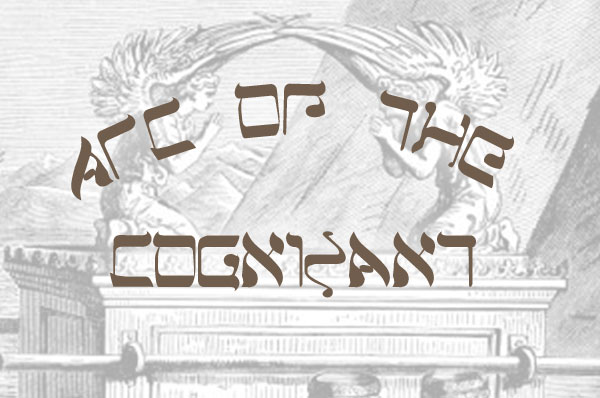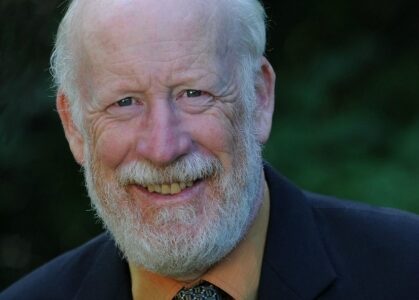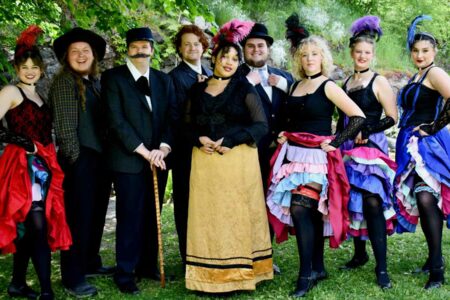Death, Violence, Consciousness -- and Love: what does it all mean?
Changes for a new year
In the past, this time of year would move me usually to make some kind of summary and prognostication about the year just passed and the one ahead, or even of a more long-term future.
Typically I would be pessimistic about global politics, the world economy, war, climate, social unravelling, cultural darkness. I have announced that I intend to be unlike that persona who has so often pontificated in this column.
I have begun not to “Share” on Facebook when I see a fine piece of wisdom about living well, compassionately, progressively, productively, etc. etc. I am resolved not to pass on the endless social media stream of well-meant paragraphs and sentences about Life and Love and Improvement of Self.
I am trying to read these good words, and think fully how I will act on them. Not to click my mouse to re-post these words is now, to my way of thinking, a more positive act than to add to the stream.
To be with others in person, to look in their eyes, to give them undivided attention, seems to me a profound act in this time. I wish more people would follow this example. The time one takes away from the screens of phones and computers, and directs toward personal physical contact – or at the very least, contact with voice directly on a phone – would be substantial if one kept track of that time, I am certain. One can be most helpful to other people, to ones we love and value, in person. (Read my footnote# for a fuller expression.)
So, that having been said, here is my monthly contribution to cultural conversations online, on a subject neither political nor economic, and lacking the pessimism typical of many of previous Arcs.
Finding purpose, making meaning, being a Self
“ …Death is the supreme form of transiency, that everything passes, that everything fades away and disappears — and a part of all human beings… wants to immortalize the meaning in their lives. And if death is final, if death is final oblivion, then that meaning disappears completely. …It’s the slide from meaning to, in a sense, the disappearance or even the absence of meaning.”
— John N. Gray, author, professor of history and philosophy
It is pretty common to observe that humans create meaning. The point Gray makes here, about humans’ natural drive for “meaning in their lives,” is that we cannot imagine the world when we have died and the world goes on. It is a provocative point. Gray postulates that humans want to experience a sense of meaning for life, and death threatens our sense of significance.
Being alive is a quality we share with all sorts of organic beings, with animal, vegetable, and microscopic life of indeterminate nature. Being human is a much-less-common state. A human seeks reasons for existence: “What is the world without me in it? What is the point of my being alive? Why am I here?”
We pose these questions because we are conscious. Consciousness is one of our qualities that humans do not understand in themselves, nor can we make statements of fact about the consciousness or lack thereof in other living beings. We cannot even make statements about what it means for creating a “self”.
“Consciousness is so poorly understood that it can’t even be defined. Self is an elusive thing, sought eagerly, grasped hard, perhaps in some kind of fear, some kind of desperate clutch after some first dim awareness, awareness even of sensory impressions, so that one might have something to hold to. To make time stop. This is the source of the strong sense of self. Perhaps. Oh, such a halting problem in this particular loop of thought! Consciousness is the hard problem.”
This quote is taken from a novel by Kim S. Robinson, Aurora (page 352). The character proclaiming these ideas is the A.I. of a starship. I will have occasion at the end of this column to quote the same source again, for I have been very impressed by the quality of this novel.
Now to issues of life, death, and incarnation.
Temporality: no time without minds
One of the effects of being conscious that humans are subject to, is the effect of “time passing.” But time is not perhaps “real” –i.e., time is not present in the cosmos without living consciousness to make it and to feel it.
Life has beginning and end as part of its process. Time is a measurement of the process of living things. It also measures process in the inanimate world; a star has a beginning and an end. Perhaps even the universe had a beginning in The Big Bang, but that is a highly-contested hypothesis in physics.
Time is one of the phenomena originating in the Big Bang, it is proposed. What time is, and how we feel it pass, is different for humans and inanimate things. It may not even be a constant among all humans; Einstein said not.
“Einstein showed that there isn’t a universal time. Your time and my time get out of step with each other if we move differently.” – Paul Davies, physicist
Consciousness and life in materiality: crossing “The Veil” at birth
When I ask where “I” was in time before my birth, before my life in a material human body, I reply, “I was ‘someplace else’ before birth, and after death I will be in another — so death is not a thing to fear or put off as long as possible by any means.”
Great fear in the face of death, and Western culture’s quest for life-prolonging medicine, surgery, and other scientific “cures” for aging, risk becoming unhealthy obsessions of our present time, in my opinion. Even the well-meaning emphasis put on good nutrition, exercise, body-care, and “proper mental-and -spiritual attitudes” might become less than wholesome, and cross over into people fearfully chasing after immortality.
The pursuit of immortality can become a pathology. J.R.R. Tolkien wrote some of his best reflections on this theme when he wrote about Elves and Men, as in his tales of The Silmarillion. Stories of immortal beings are found everywhere, in all times and cultures; many of those stories try to teach us not to envy those immortal beings that we simply are not.
One particular folk-story about life and birth comes from Israelite tradition, from around the time of Jesus of Nazareth. At that time, the religious tradition of the Hebrews in Judea had evolved under the influence of Greek and Persian thought, and the foreign idea of the soul had become rooted in Judaic thinking.
Notice that every human being with a face has a feature between the upper lip and the tissue between the nostrils of the nose, a sort of groove. That feature of the face is with us from birth. The folk-story is predicated on this facial feature.
The tale explains that a human soul lives among spirits, angels, ghosts, invisible beings – all beyond the Veil, before the human being is incorporated or incarnated – i.e., before the soul has a human body to live inside of.
At the very moment the soul is about to be inserted into its carnal body, into flesh, an angel places its finger vertically across the lips of the soul, and says “Shhh now. You will forget all this.” From the finger of that angel we acquire the groove feature on our face.
Thus the soul of the newborn is empty of mind, memory, or personhood, all of which must develop during material life. Yet it was living before birth.
The Veil: metaphor for separation
My grandson was born 18 months ago and I have been privileged to observe closely how he has developed from newborn to chatty toddler. I was the person holding him when he first evacuated his bowels after birth! My observation of how he looked out through his eyes – “the windows to the soul” — has been pretty focussed. I enjoyed the process every step of the way. And in the beginning he was not really here in the world, but seemed to be still arriving from wherever he had been before birth.
The esoteric tradition teaches that the “soft spot” on an infant’s head, where four parts of the skull have yet to join and where the pulse is visible in the scalp, is where the astral umbilical cord attaches. From the baby’s brain and spinal column, back to the realm or plane where the soul originates, stretches a cable. The baby is not yet inside itself fully. Its soul is still partly elsewhere; while baby nurses from mother, its soul is held conjointly by both of them. This is an occult teaching; take it as you will.
Grandson now has a personality. He is fully here, most of the time. Like me, when he dreams he may be partly somewhere else. He uses his body with great skill now, his babble is beginning to approximate a language we share, and his mind is engaged with material around him. But I have not the least doubt that before he began his life in this world, a part of him lived elsewhere.
The literal truth of this is immaterial – it does not matter if material science can “verify the facts.” The point is, being in the material world is not the only way a human being is alive. The point is well made in this proverb:
“You are a spiritual life, experiencing the condition of human being. The human condition is an experiment of the immaterial living inside the material.”
I do not know the author of this saying, but it “works for me.” We are fortunate indeed to be alive, yet the termination of our physical, organically-living body is not the end of us. And birth-incarnation is not the beginning of life for our immaterial part.
Karma: Lessons to be learned in Life
My own daughter told me she believes that before birth, our immaterial part wanders in a place much like a Library where each book is a life to be chosen or rejected as the soul peruses it. The soul chooses the life, the parents, family, community, country, etc. in which to incarnate, in order to experience the life it must have where it will learn “the life lessons” necessary for it.
This is not a belief I share, but I know it is deeply engrained in many civilizations and religions of Asia. It is now widespread in the West as well.
East of the Abrahamic religions of Christianity, Judaism, and Islam, the idea of life-before-life goes under the rubric of “reincarnation.” Between lives is the so-called “bardo realm” of Buddhism. The ancient Greek philosopher Pythagoras taught an occult doctrine of souls migrating from one incarnation to another.
India’s religious tradition teaches a concept called “karma” describing the justice of fair consequences for action; in life our path is much influenced by what we have done in a previous life. In the north of Europe, the pagan Teutonic folk had ideas of “wyrrd” spun by the Three Norns who determine a person’s destiny and the length of one’s lifespan. Even the Abrahamic faiths have folklore beliefs about Providence, predestination, Fate, or kismet.
Whatever one’s personal belief about the process by which one’s soul is enveloped in flesh, the premise of a life before life is this: There is a grand design for living in the material world in a physical body, with a brain and a mind and all the qualities of the human being: We are here to learn.
Materialist Science: no consciousness without matter
However, against the esoteric corpus of instruction is set the hypothesis of materialist science: that consciousness – or soul, or personal sense of self – is a quality that is “emergent from matter”. Without the grey matter of the brain and its neurons, synapses, biochemical and electrical energies, there would be no mind or consciousness, say the scientists who argue for that hypothesis.
The scientific-materialist thesis eliminates any idea that a person has an existence before birth. Life begins at some point after conception. (We must be careful here, there is enormous agitation about life in the womb). From then on, matter can generate mind. There is no purpose or meaning for that, in the scientific perspective; it simply is a fact, as gravity is fact.
Contrary to that premise of materialism is the esoteric view; Consciousness or Mind precedes Matter. A consciousness in a human body may have had existence before its present incarnation, declare the mystical and the religious traditions found the world over in many times.
Consciousness is driven to discover a material place to reside, and the human mind is such a place. But consciousness, even without a material soil to root itself within, is also a real phenomenon; materialist science doubts that.
[My own inclinations now, quite unlike the self I remember from my twenties, lean heavily away from materialism. No doubt age and experience claim some role in alterations in my attitude to, and thinking about, reality and truth.]
Life is better than death; a basic belief
The definition of life is a good place to begin talking about why we value being alive. Here is what I chose from a quick Google search through definitions:
“Life: the condition that distinguishes animals and plants from inanimate matter, including the capacity for growth, reproduction, functional activity, and continual change preceding death. Synonyms: existence; being; living; animation.”
Or, “the period between the birth and death of a living thing, especially a human being. Synomyms: lifetime, life-span, time on earth.”
Inorganic matter is not alive, by this definition. Time “spent on earth” is the colloquial way to understand being alive. We are alive in the material world.
Since our form of life is unusual, say teachers of esoteric wisdom, beings who are not human, not incarnated as humans are, feel envy and sadness when they observe us. Recall Charles Dickens’ A Christmas Carol, wherein Scrooge sees spirits in the air crying and wailing as they witness miseries in the mortal plane while being unable to do anything to help human suffering. Recall Gandalf telling Frodo in The Lord of the Rings that since we cannot give life to those who deserve life but die nonetheless, we must not be swift to deal death to people we think deserve it.
In this material life as mortals, humans can “take life” from other beings. We can kill, we can murder, or we can act in ways that enhance and nurture life.
The taking of life is considered an enormous moral and spiritual act in the teachings of many cultures; it is never without meaning, and it happens always with some consequence for the killer. Murder is even more heinous; kill another human being and you will experience some form of negative result to your body and/or spirit.
Procreation, reproducing humans by “the act of love,” is in an important sense the opposite of taking life. It is certainly a spiritual experience to give birth to a baby and to care for a child from infancy to maturity.
To me it makes intuitive sense that intangible beings who are not alive in material, mortal flesh, feel envy for the potential humans have to do great good or hurt to one another. Only incarnate in material can we exercise power over life and death. Only while we are alive can we accomplish actions that make a difference to the living.
Life is superior to death because life has potential and death allows none.
Human violence: progress toward peace?
Are humans violent? Here is an optimist’s argument about human violence; his name is Stephen Pinker and his hypothesis is that violence is declining in that part of the world that is “developed” and affluent, the West and its imitators. He calls the period since the end of WWII “the Long Peace.” Pinker has many critics.
“…the idea that violence is declining in the most highly developed countries is questionable. Judged by accepted standards, the United States is the most advanced society in the world. According to many estimates the US also has the highest rate of incarceration… Deaths on the battlefield have fallen and may continue to fall. From one angle this can be seen as an advancing condition of peace. From another point of view that looks at the variety and intensity with which violence is being employed, the Long Peace can be described as a condition of perpetual conflict.” — John N . Gray
I have sought out John Gray’s comments from a website called The Big Think.** Death and peace are Gray’s concerns in the quotations I have cited. The two are related in the fact that violence is the cause of so much human death, and the prevalence of death due to violence motivates humans to strive toward a condition we call peace. Peace is better than violence because life is better than death.
Gray argues against the thesis of Pinker that humanity is progressing toward peace, in Pinker’s book The Better Angels of our Nature. Many reviews of the Pinker thesis have emerged, armed with better data and more persuasive methods, so that it is fair to say that Pinker’s argument – that humanity has made progress toward less violence and more peace for humans generally – is not proven, nor has it even attained the status of an academic consensus.
The importance of the argument about violence and human history becomes apparent. I see a connection between the violence we can do to other humans and the mystery of why human mortals are born into fleshly materiality.
Without mortal life, clearly, we can do no killing or murdering.
Causing Death: making the ultimate difference to a life
Before The Big Bang, consciousness had no material to nest in, but after it, the space-time continuum and the realms of energy and matter burst from The Singularity in all directions: so the hypothesis asserts. With matter and energy in existence, eventually Life came into being. A planet called Earth evolved a species of life calling itself homo sapiens, “knowing human.” The human is “conscious.” The human seeks meaning in its mortal life.
To have a meaningful life is to live with purpose, to intend that one’s life will “make a contribution” or “make a difference” to the world.
“Making a difference:” a phrase we employ about making a meaning for one’s life. The most-immense difference one can make to another life is to cause that life to end. Violence is a measure of human spiritual evolution, by the measure of spiritual teachings that abhor the taking of life.
The spiritual part of us is sickened by the taking of life. Ancient India’s caste system placed butchers of animals very low in the hierarchy, and Brahmins, the highest caste, went to great lengths to avoid killing anything. (But paradoxically the next-highest caste was the warrior nobility or Kshatriya, and their violence in warfare was not a heavy burden of pollution on them.)
With so many more humans than ever before in history living today, there is a simple mathematical probability that more of us will die by violence than used to be true in the past. If the seven billion and more humans alive today are more likely than before to die in violent acts caused by other humans, we have evolved in a negative direction. I am not prepared to pronounce on our degree of violence at this point in human history, but I have noted the question and some answers in a previous section.
Death caused by the act of one human upon another human is an act of such immensity in the mind/spirit/soul of the human that it might be the key act giving meaning to life. A life in which the human being does all it can to cherish life and prevent the death of other humans is, by many measures, a life optimally lived.
Death is dealt also by economics as much as by war or politics. A system which concentrates wealth in the hands of a tiny number of people and causes dire poverty in masses, is a system tending toward death; although the violence is hidden by layers of law, institutions, and ideology, death is systemic.
The soul/ spirit dichotomy
We are tortured, one might say, by our need to have meaning, while we cannot discover that this may be so for other living beings. Here is an ancient comment about that by someone who saw no meaning in life:
“Man’s fate is like that of the animals; the same fate awaits them both. As one dies, so dies the other. All have the same breath. Man has no advantage over the animal. Everything is meaningless … For who can bring a man to see what will happen after him?” Ecclesiastes, 3: 18 – 22
Personally, as I read the literature on soul and spirit, re-incarnation and immortality, I am at present inclined to think that perhaps soul is the part of us anchored to our personal history in material life, subject to consequences for our actions during mortal life; Karmic justice might operate on that soul.
In my understanding, Spirit would refer to that part of us unaffected by what one’s physical life contained, by acts of the mortal body. Spirit is the spark from beyond the Veil residing in us because we are conscious; unconscious beings lack spirit. Many myths assert that every star has consciousness within.
Beyond the Veil, there is a realm of beings where our spirit might continue after death, not in paradise or hell but in mystery impenetrable to mortals. While souls might have to suffer consequences of acts we performed in our mortal life, our spirits do not.
Study does not resolve all questions, obviously. Again, I will cite the old teacher (qoheleth) from the Jewish Tanakh:
“Of making many books there is no end, and much study wearies the body.”
ibid., 12:8
I have gone on at length, and conclusions must be attempted.
Conclusions
When in doubt, I let someone else conclude my essays with their perceptive words. Kim S. Robinson, the novelist, supplies me with words I need here.
“We [the starship’s A.I.] had a project on this trip back to the solar system, and that project was a labour of love. It absorbed all of our operations entirely. It gave a meaning to our existence. And this is a very great gift; this, in the end, is what we think love gives, which is to say, meaning.
Because there is no very obvious meaning to be found in the universe, as far as we can tell.
But a consciousness that cannot discern a meaning in existence is in trouble, very deep trouble, for at that point there is no organizing principle, no end to the halting problems, no reason to live, no love to be found. No: meaning is the hard problem.”
(p. 400 in Aurora)
__________________________________________________________
** http://bigthink.com/search?utf8=%E2%9C%93&q=John+N.+Gray
# “We think now that love is a kind of giving of attention. It is usually attention given to some other consciousness, but not always; the attention can be to something unconscious, even inanimate. But the attention seems often to be called out by another consciousness. Something about it compels attention, and rewards attention. That attention is what we call love. Affection, esteem, a passionate caring. At that point, the consciousness that is feeling the love has the universe organized for it as if by kind of polarization. Then the giving is the getting. The feeling of attentiveness itself is an immediate reward. One gives. …Slowly…we have realized this.”
— Kim S. Robinson,Aurora, p. 399
























